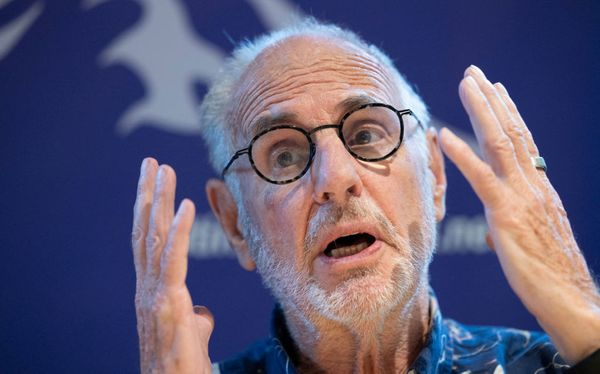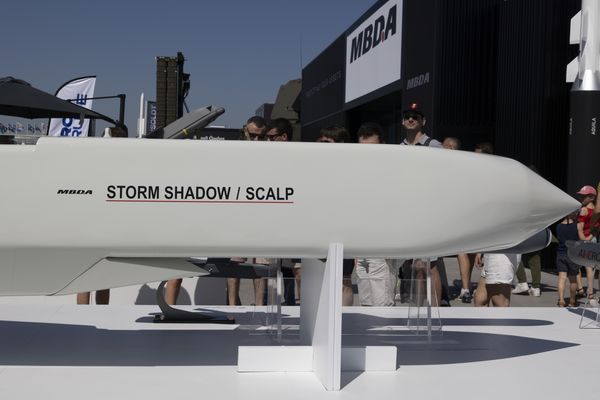Looking for go-anywhere best mutual funds that aren't trapped in a style box and can buy stocks of all sizes and styles? Well, Justin White's T. Rowe Price All-Cap Opportunities Fund (PRWAX) checks all those boxes.
The portfolio manager of the $8.3 billion five-star-rated Morningstar fund isn't limited to a specific type of stock, such as a large-cap growth name or a midsize value stock. White, who is lauded by Morningstar for his "keen judgment and nimble trading," can fill his fund with a much broader universe of stocks.
Free of style-box handcuffs, he has the freedom to make tactical portfolio moves, such as dodging downside by underweighting megacaps in free fall or darting into value names or more defensive companies with more upside potential or less downside risk.
This flexible approach has paid off for shareholders of T. Rowe Price All-Cap Opportunities Fund since White took over in April 2016. The fund's 13.7% annualized total return over the past five years has topped 94% of its peers. And its 19% per annum gain in the past three years outperformed the same number of competitors.
So far in 2023, T. Rowe Price All-Cap Opportunities Fund has gained 3.8%, which is in line with the benchmark S&P 500's 3.9% return.
Recently, IBD caught up with White to learn more about the fund and to get his thoughts on the market and investing outlook.
T. Rowe Price All-Cap Opportunities: One Of The Best Mutual Funds
IBD: Markets have been volatile due to Fed rate hikes and the first bank failures since 2008. Do you see opportunity or more risk ahead?
Justin White: I have been pretty cautious since late 2021. And I'm still pretty cautious on how this ultimately unfolds. It feels like a classic Fed tightening cycle that ends in some form of earnings recession or downturn. The challenge in markets now is everybody wants to have a good playbook to use. But there's no clear trend to follow. I think what you have to do is have a view on how the cycle ultimately will unfold. And take a longer-term perspective on some of the holdings to make sure that you feel like you'll be OK when you get to the other side and not get killed.
IBD: What's the fund's investment strategy?
White: The T. Rowe Price All-Cap Opportunities Fund is very flexible. It can invest across the market-cap range, as well as invest in value stocks, core stocks, and growth stocks. And that flexibility is a big asset.
IBD: How so?
White: The way we describe it to clients is if I do my job well, you can own this fund and trust me to pivot around the market as the world changes. I don't have to be beholden to growth stocks like a pure growth fund would.
Last year, for example, I would have been down a lot more (the fund declined 21.3% vs. a 29.9% dive for peers, according to Morningstar), if I wouldn't have been able to dodge (the downside) as well as I did. That's because we pivoted from growth more towards the middle of the market starting in late 2021.
IBD: What do you look for in stocks you buy?
White: My stock-picking process revolves around four pillars. I've used it since I was an analyst, or about 11 or 12 years. And it's worked in different market environments with different types of leadership. So I trust it.
Best Mutual Funds Look For Winning Traits
IBD: Can you explain?
White: The overarching philosophy is that stock prices over the short- to medium-term are a function of my view of supply and demand. You want to find stocks where lots of people have a lot of reasons to want to buy them. And you want to try to avoid stocks where there's lots of reasons for people to want to sell them. I know that kind of sounds obvious, but there's sort of a truism in that if you can consistently identify stocks that are going to be appealing to other people, you can increase your odds and outperform.
IBD: Where do the pillars come in?
White: So, each of the four pillars represents an incremental reason for someone like me, an institutional investor, to want to buy. The first pillar is we look for business quality. There's judgment involved. Is this a well-managed company? Is it on the right side of change? Does it have a moat around its business? High returns on capital? Do they allocate capital well?
IBD: What other winning traits do you like?
White: The second pillar: call it expectations. So, for the metric that a specific stock trades on, such as earnings, billings, sales, free cash flow, we're looking for stocks where our internal expectations are way above published Wall Street consensus. But we're not trying to call quarters. Ideally, you're looking for a situation where there's a real multiyear type misunderstanding (between what we think and the Street thinks).
IBD: Give me an example.
White: Take Eli Lilly. A year ago, it got FDA approval for a type 2 diabetes drug, Mounjaro. Our analysts thought the new drug's (peak annual) sales could be over $40 billion. At a company that had a revenue base of less than $30 billion in 2022. So, that's a hugely meaningful misunderstanding, right? That's the type of thing we're looking for.
What To Look In Top Stocks
IBD: What else to do you look for in a business?
White: The third pillar, let's call it acceleration now. I used to call it better or worse. But acceleration is simpler. Are your business fundamentals getting better? Are revenues accelerating from 5% to 15%? And are margins expanding? This is not a judgment call. It's just a numbers thing. People like to own businesses when fundamentals are getting better. The fourth pillar is valuation. I would just say that relative to other managers, I think I've always had sort of a deep appreciation for the importance of valuation over time. So, I just kind of always tried to focus on making sure that asset prices have some grounding in reality.
IBD: Do all pillars need to flash green?
White: No. You don't usually get all four, but what you do tend to get is a body of evidence. So, the more pillars working more strongly for you the better. Our framework does not lend itself to a certain type of stock, I don't really have a certain type of stock. I could own energy stocks, really expensive stocks, or core stocks. It just depends on what fits the framework. If it does, I want to buy it.
Positioning For Growth As Cycle Plays Out
IBD: People are wondering where to put their money. How are you positioning the fund?
White: I think the market ultimately resolves kind of in an unfavorable direction, as the Fed tightening cycle continues to play out. What I'm trying to do is just focus on businesses where I'm very confident that over two to three years are going to be quite a bit higher. And ones that don't have much cyclicality in earnings.
IBD: Any names that fit that profile?
White: On the aggressive side of the portfolio, a stock that fits those buckets is chipmaker Nvidia, even though it looks expensive (based on consensus earnings estimates). A conservative one would be telecom T-Mobile. Another name is drugmaker Eli-Lilly. Though I'm cautious, it's not like I have a huge cash balance. I'm trying to avoid companies that have a lot of risk. I'm trying to find businesses where numbers are better than expected and fundamentals are hanging in there.
IBD: What's the thesis on Nvidia?
White: It's no secret that AI (artificial intelligence) is top of mind for a lot of people. And you might say, hey, this (market trend is) already played out. But AI just feels like it's so early to where it's ultimately going to go. And Nvidia has essentially a monopoly on GPU chips (which are powering the AI revolution). And there's this frenzy, this scramble for lots of companies to invest in these chips to power their AI initiatives. So, (Nvidia's) the arms vendor to this really powerful, durable (growth runway). So, when I look at the business, it's just an incredible asset.
IBD: So, it checks most of the boxes?
White: It is just extremely well positioned. Quality. Check. Numbers and expectations. Check. I focus on our internal growth rate estimates versus Wall Street's consensus. Our numbers are meaningfully ahead of Wall Street on earnings and on cash flow over time. On consensus numbers, Nvidia looks very expensive on 2024 earnings estimates and pretty expensive on '25 earnings. But based on our numbers, it looks very reasonable.
T-Mobile US Held By One Of The Best Mutual Funds
IBD: What about T-Mobile?
White: T-Mobile is a good business. It's gaining share in an industry with low cyclicality. And it trades at a very low valuation on a cash-flow view, and it has been for a couple of years. T-Mobile has been gaining share versus Verizon and AT&T. For years, they have had the best network. They have a lower price point. They're trading at seven times free cash flow. And this is a business that should probably be trading at 10-, 11-, or 12-times free cash flow in three years. And you have high visibility to that forecast. We have a little upward bias to numbers. On our model we're a little bit ahead. The valuation is really attractive, so this feels like a low risk 75% return over three years.
IBD: Tell me more about Eli Lilly.
White: It's really just the adoption of the new type 2 diabetes drug Mounjaro. It's also an anti-obesity drug. It's a pill you take, and you lose 20% of your body weight, no side effects essentially. (Recently, they've been) running capacity constraints. (Once) capacity comes online as you go through the next few quarters, the floodgates are going to open on demand. And, we have seen meaningful positive revisions coming for revenues in 2024.
And though this stock looks expensive on earnings if you look out one year, if you look out three, four or five years, you can start penciling out earnings upside without really pushing. So, this is one where in the next six months who knows exactly how it will perform. And that's kind of true for a lot of stocks. But it feels like a pretty high probability that you can kind of look over time and you don't really have to worry about recession.
IBD: Where do you stand on the health of the banking sector?
White: I have reduced some of my weightings in financials. It's not that I think that there is a big contagion coming. I think that's going to be held in check. What Silicon Valley Bank did bring to light was the fact that we have a lot of banks — regional banks — that are holding loans and securities that are underwater. That's going to be bad for earnings. It is also going to make it harder for SMEs (small and midsize businesses) to get exposure to credit. And when you think about the next year, to get inflation under control, (the Fed) probably needs rates to be tighter for longer. And as the stresses build, it's just kind of hard to find (bank stocks that fit) my framework.
How Best Mutual Funds Look At Banks
IBD: Do you see any of the major banks as having been thrown out with the bathwater that could fare better?
White: Some will fare better than others, but in general, it's just a little bit tricky, a little uncomfortable (owning banks).
IBD: Do you think the growth outlook has slowed in a meaningful way?
White: In general, what I'd say is that there is a case to be made that as more stresses emerge there will be some slowdown.
IBD: So, you think the headwinds and fallout related to Fed rate hikes have not all played out.
White: Historically, the market bottoms after the Fed (starts to) cut rates. When they start cutting, people say, "Oh, no, it's just getting worse." (When it comes to bottoming), it just feels like there's this process that has to play out. Would I be shocked if the market is higher in six months? No. But we're recommending people focus on individual companies where growth is not cyclical, where you don't have a lot of earnings or valuation risk. I would say you just have to be discerning. It should be a market where stock-picking adds value.
It's Hard To Bet Against The Stock Market
IBD: Will investors who put money to work now be happy a year, two years, three years from now?
White: I mean, over time. It's hard to bet against the stock market. The longer (the holding period), the higher the probability gets (to earn positive returns).
IBD: I hear a lot of talk about a market leadership change. What areas do you like now?
White: The short answer is that I feel energy and commodities could be pretty interesting.
IBD: Why is that?
White: There are a few things. Number one, this sector has been underinvested for the last seven, eight years.
IBD: So why is lack of investment of new production bullish?
White: There's opportunity because the world is not going to be able to wean itself off fossil fuels as quickly as people think. So, you're going to need to add capacity, add production that's a bridge (to more sustainable fuels). That's going to be a decade's-long phenomenon. We can't just make new capacity come online.







